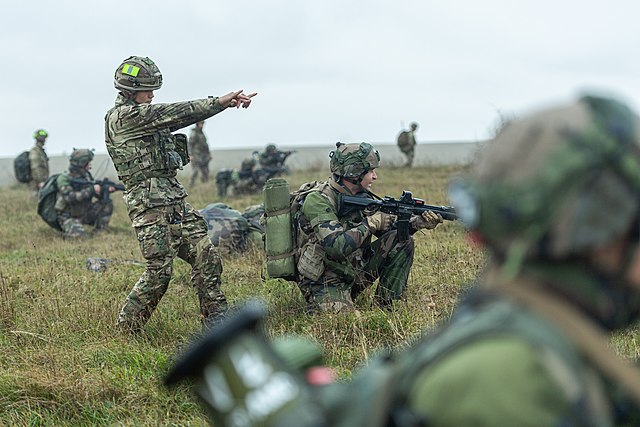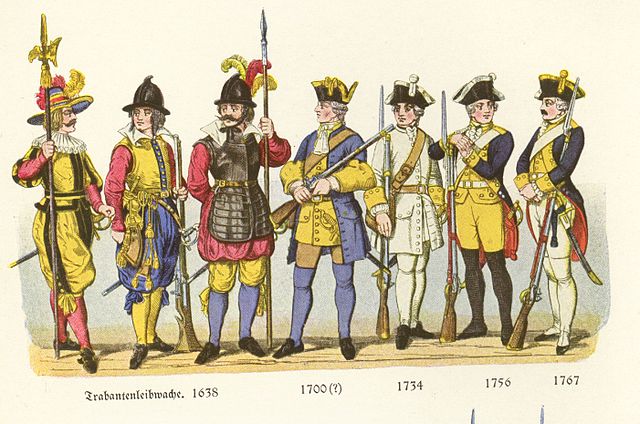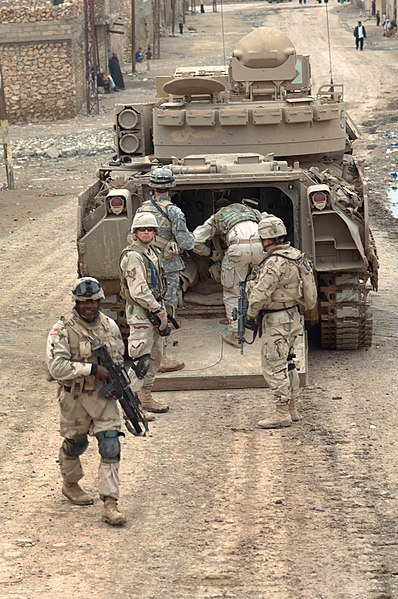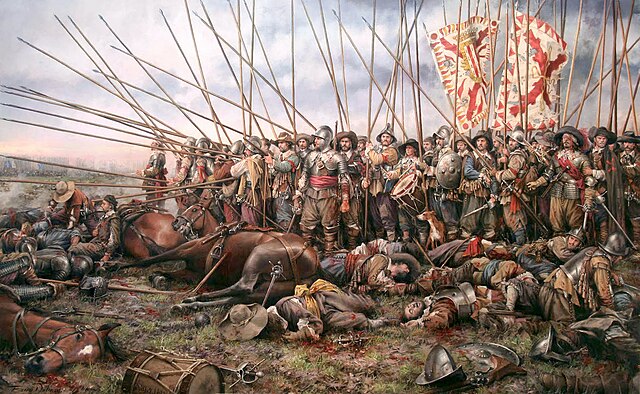The Macedonian phalanx was an infantry formation developed by Philip II from the classical Greek phalanx, of which the main innovation was the use of the sarissa, a 6-metre pike. It was famously commanded by Philip's son Alexander the Great during his conquest of the Achaemenid Empire between 334 and 323 BC. The Macedonian phalanx model then spread throughout the Hellenistic world, where it became the standard battle formation for pitched battles. During the Macedonian Wars against the Roman Republic, the phalanx appeared obsolete against the more manoeuvrable Roman legions.
Fresco of a Macedonian soldier wielding a spear and wearing a kausia, from the tomb of Agios Athanasios, Thessaloniki, Greece
Infantry is a specialization of military personnel who engage in warfare combat. Infantry generally consists of light infantry, irregular infantry, heavy infantry, mountain infantry, motorized infantry, mechanized infantry, airborne infantry, air assault infantry, and naval infantry. Other types of infantry, such as line infantry and mounted infantry, were once commonplace but fell out of favor in the 1800s with the invention of more accurate and powerful weapons.
French Army and British Army infantry during a military exercise in 2020
Various infantry of the 17th through 18th century (halberdier, arquebusier, pikeman, and mix of musketeers and grenadiers) of Duchy of Württemberg
Infantry of the 3rd Armored Cavalry Regiment of the United States Army boarding an M2 Bradley IFV in Iraq in 2006
Rocroi, el último tercio ("Roicroi, the last tercio") by Augusto Ferrer-Dalmau, portraying infantry of a battered Spanish tercio at the 1643 Battle of Rocroi





